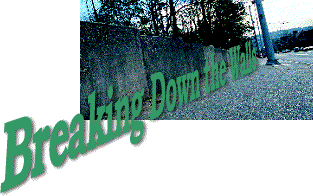
Part Three - New Campus Master Plan to Control Growth
CUCAC has opened a line of communication between the parties, and is playing a vital role in the UW's current Campus Master Plan, a document that proposes adding 3 million square feet in new buildings and physical refinements in and around campus for the years 2002-2012.
The proposed development responds to the forecasted growth in student enrollment, and is comparable to the physical development that has occurred on the Seattle campus during the past 10 years.
New buildings aren't the only potential result of the Campus Master Plan. Planners are looking for opportunities to strengthen connections between central campus and other areas both on campus and in the community. One such idea under consideration is putting a "lid" on Pacific Avenue N.E. to treat the busy street as a "seam," rather than a break between sections of campus. Planners also want to create more inviting campus edges and entrances and seek to do such things as make better use of the Campus Parkway area by improving traffic and circulation, and improving the quality of open space and the image of the University.

About 10,000 new students, faculty and support staff will come to the Seattle campus in the next 12 years. The UW is preparing a new Campus Master plan to preserve campus beauty, such as the "Quad" seen above, while adding up to 3 million square feet of new and remodeled buildings. Photo by Kathy Sauber.
A major component of the process is keeping communities apprised of what is being considered and to solicit neighborhood input.
"We want to make sure nothing stands in the way of getting reaction from anyone," says Theresa Doherty, the acting campus master plan coordinator. "We want an open dialogue."
Once accused of making expansion plans behind closed doors, the UW tries to get the word out about its plans or get input. During every phase of information gathering, the UW has provided brochures, newsletters, fact sheets, frequently-asked-question sheets, Web sites, press releases, maps, as well as held meetings both on campus and at local community centers.
In June, the UW took CUCAC members on a bus tour of campus to point out 68 potential development sites. The year before that, local residents were invited to campus for a formal luncheon, featuring a string quartet, as a thank you for working so well together.
"We have worked very hard to transform our relationships with the community," explains Bridgett A. Chandler, the UW's assistant vice president for regional affairs. "It's a tall order. We are growing. The communities are growing. Traffic is getting worse."
Ah, traffic. Without a doubt, that is the biggest sore point for everyone. It's no surprise the surrounding communities are quite nervous that the UW plans to have 10,000 more people on campus in the next decade to accommodate the "baby boom echo" (see "The Wave," March 1996 Columns). (Only a few thousand of that number are new students. The rest will be faculty and support staff.)
"The community is worried about how we can take that many new students and faculty without impacting the surrounding areas," says Peter Dewey, the UW's transportation manager. "Mostly in terms of traffic."
Despite the projections, one of the University's primary goals in the master plan is to keep car trips to campus at the same level they were in 1989. "That puts the onus on us," Doherty says. "I know it is ambitious," Dewey says, "but the alternatives are worse."
The UW already made incredible strides in reducing traffic in the "U" District with its fabulously successful U-PASS program, which provides members of the campus community with incentives and options for getting to work and school other than driving alone. Students, faculty and staff purchase the U-PASS for a nominal fee, and enjoy riding public transit, carpools, vanpools and reimbursed night rides home. From 1989 to 1998, while campus population increased by 5,000, the number of automobile trips to campus decreased by 3,000.
To keep those car trips down, the UW plans to raise on-campus parking rates, foster more telecommuting, and encourage people who live near campus to walk or ride a bike. (Surveys show that the single biggest reason for people not bringing a bike to campus is their perception that there is no safe and easy bike path.)
- Return to March 2000 Table of Contents